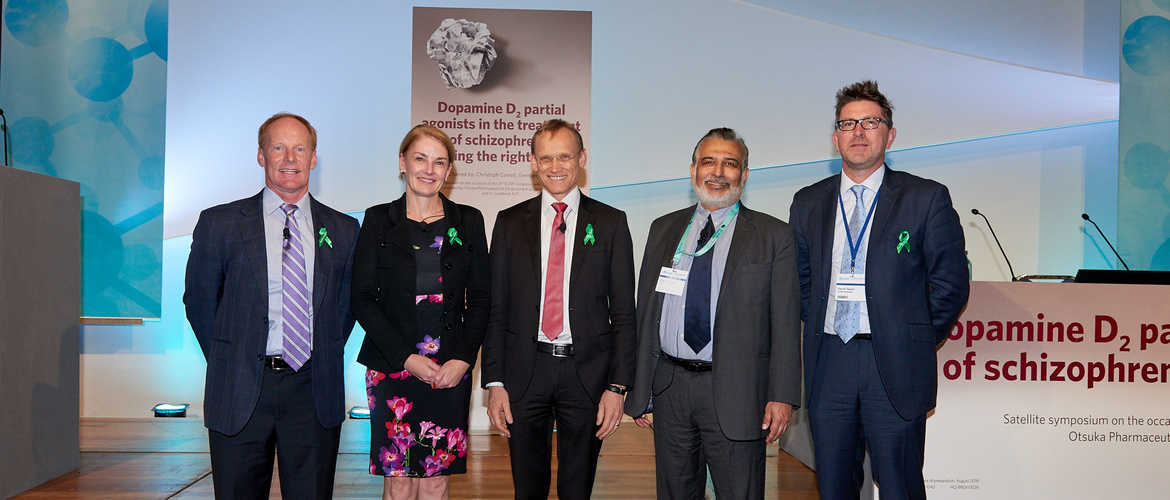
Välj en kanal
Kolla in de olika Progress in Mind-kanalerna.

Progress in Mind

‘Functioning’ is a broad term, and encompasses the individual’s ability to perform normal daily activities required to meet basic needs, fulfil usual roles, and maintain health and well-being. Deficits in psychosocial functioning are core features of schizophrenia. For example, research indicates that 63% of patients with psychosis have obvious or severe dysfunction in socializing1, 32% with quality of self-care1, and their employment rate (full- or part-time) may be as low as 10% compared to the general population rate of 80%2. All of which points to the need to address and prioritize functional improvement across a wide spectrum for patients with schizophrenia.
“Is functioning in patients with schizophrenia still under-prioritised?” was the question posed by Dr Diane McIntosh (Clinical Assistant Professor of Psychiatry, University of British Columbia, Vancouver, Canada), to start this session from ECNP 2018 in Barcelona.
Is functioning in patients with schizophrenia still under-prioritized?
The majority of patients with schizophrenia experience recurrent relapses, which can lead to deterioration in functional capacity as the illness progresses. Conversely, if symptomatic remission can be achieved after relapse, then this is associated with significantly better social functioning and quality of life3. Symptomatology does not appear to be the only driver of functional impairment, and Dr McIntosh described the other factors which play a part, including medication side effects, cognitive performance, and physical health status4.
There is growing awareness that patients and their families identify better social and occupational functioning as possibly the most important self-defined treatment goal5. Although recent treatment guidelines recognize maximizing adaptive functioning and quality of life, and promoting and maintaining recovery, as important targets6,7, there is concern as to how many patients actually achieve these goals.
Only 30% of patients achieving an adequate level of functioning
Research shows that 92% of clinicians are aware that social functioning is a key treatment goal for their patients, but they also recognize that only 30% of patients are achieving an adequate level of functioning8. In a survey of psychiatrists, the most important indicator of antipsychotic treatment success was considered to be efficacy on positive and negative symptoms, with much lower ratings for measures of improved functioning and cognition9.
When choosing a treatment, both patients and clinicians prioritize symptom control, but Professor Rajiv Tandon, Department of Psychiatry, University of Florida College of Medicine, Florida, USA, also stressed the need to consider the impact of side effects on the important patient goal of improved functioning.
Consider the impact of side effects on the important patient goal of improved functioning
Treatment side effects can impose a significant burden on patients, and Professor Tandon discussed the results of a study showing 77% of patients with psychosis reported side effects, which impaired their daily life to some degree in 61%, and to a moderate or severe degree in 30%1. Even a small change in functional capacity can have a significant effect on quality of life, and longer-term can contribute to chronic health problems10,11.
A recent survey, aiming to gain a better understanding of the functional and emotional impacts of antipsychotic side effects from the perspective of patients with schizophrenia, revealed that only 30-40% rated their satisfaction with a range of measures including ability to function in daily life, family and social relationships, and work, as ‘very good’ or ‘good’12,13. The most common side effects were difficulty sleeping, dry mouth, and restless legs, which had occurred several times in more than 50% of patients, and daily in 15-20%. Sedating side effects had the most frequent impact on patient functioning followed by activating side effects.
Most second-generation antipsychotics are serotonin-dopamine antagonists, but also interact with a range of other receptors, resulting in both beneficial effects and potential side-effects. Professor David Taylor, Director of Pharmacy & Pathology, South London and Maudsley NHS Foundation Trust, London, UK, discussed how blockade of the Dopamine D2 receptor is important for reducing mesolimbic hyperactivity, and hence reduces the positive symptoms of schizophrenia, but may not adequately address other symptoms, and can also lead to extrapyramidal side effects. Hence, instead of a full blockade of the Dopamine D2 receptor, partial agonism of the Dopamine D2 receptor may help to provide a balance between symptom control and the experience of side effects.
Partial agonism of the Dopamine D2 receptor may help to provide a balance between symptom control and the experience of side effects
Professor Mattingly, Washington University School of Medicine, St Louis, Missouri, USA, and Professor Correll, Charite – Universitatsmedizin Berlin, Berlin, Germany; The Donald and Barbara Zucker School of Medicine at Hofstra/Northwell, New York, USA; and The Zucker Hillside Hospital, New York USA, went on to present data to demonstrate the short- and long-term benefits of this class of drugs; achieving efficacy, while reducing the adverse effects of full dopamine antagonism, and maintaining or even improving functioning14.
To achieve recovery in the full sense of the word
The answer is likely to require the coordination of a range of different treatments, and support and rehabilitation measures, in order to achieve recovery in the full sense of the word.
Educational financial support provided by Otsuka Pharmaceutical Development & Commercialization, Inc and H. Lundbeck A/S